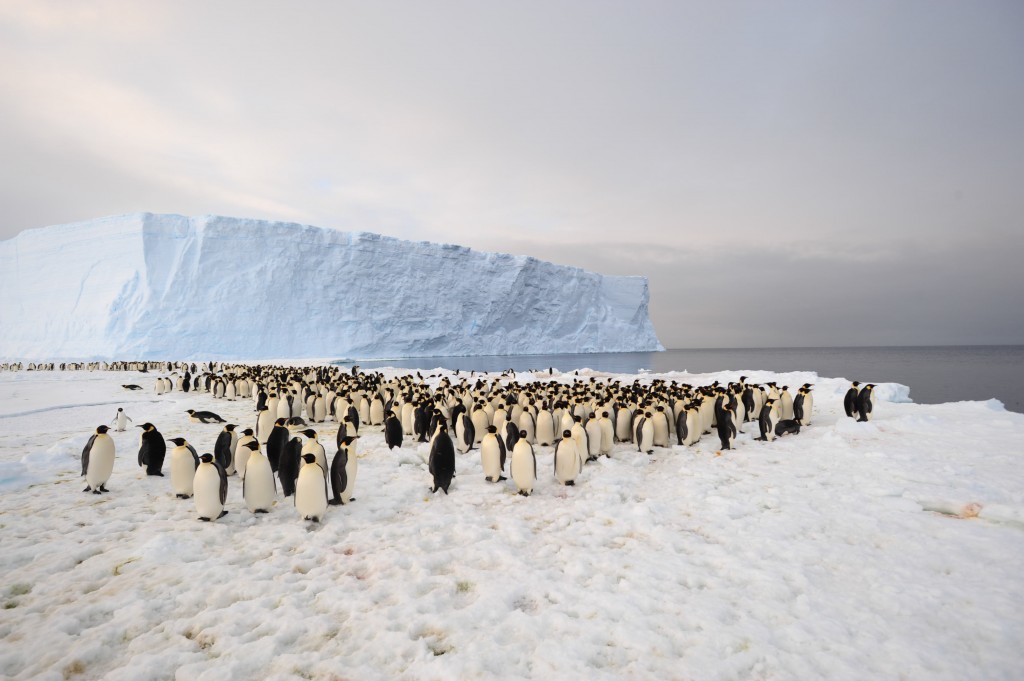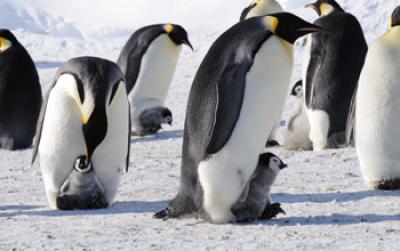Search Results for Tag: penguins
Emperor Penguins in Distress
It has been a busy week for me here at DW, and unfortunately I was not able to do justice to the latest research on the likely fate of the Emperors down at the far south of the planet in the form of some interviews or a detailed article. Before I head off to a seminar tomorrow, I want to make sure the Ice Blog does not neglect our majestic friends in the Antarctic. Fortunately, Tim Radford from the Climate News Network has summed up the story: ” Loss of Antarctic sea ice through climate change threatens the emperor penguin’s habit to such an extent that scientists say it should now be made an iconic symbol – like China’s endangered giant panda – of the wildlife conservation movement” . Thanks Tim, Alex and all at the Climate News Network who keep us up-to-date on so many important climate issues. Thanks also to Dave Walsh for alerting to me to this study which, I am pleased to say, made its way into a lot of media outlets, if only briefly. Thanks also to Dave for the Belgian International Polar Foundation picture.
Allow me to quote at length from Tim’s summary:
“Global warming will this century take its toll of Antarctica’s most regal predator, the emperor penguin. There are now 45 colonies of this wonderful bird, but by 2100 the populations of two-thirds of these colonies will have fallen by half or more.
Stéphanie Jenouvrier, a biologist at the Woods Hole Oceanographic Institution in the US, and colleagues from France and the Netherlands report in Nature Climate Change that changes in the extent and thickness of sea ice will create serious problems for a flightless, streamlined , survival machine that can live and even breed at minus 40°C, trek across 120 kilometres of ice, and dive to depths of more than 500 metres. The researchers took all the data from 50 years of intensive observation of one colony in Terre Adélie and used climate models to project a future for the other 44 colonies known in the Antarctic.
Decisive factor
They found that the decisive factor in emperor penguin survival was the sea ice. If the seas warmed and there wasn’t enough ice, then that affected the levels of krill in the southern ocean, and therefore reduced the available prey. It also made the penguins more vulnerable to other predators. If the opposite happened and there was too much sea ice, then foraging trips took longer and penguin chicks were less likely to survive.
Aptenodytes forsteri – the Linnean name for the emperor – is not in trouble yet, and its numbers may even grow in the years up to 2050. But this growth won’t last, and decline is likely everywhere. Climate change has already begun to affect penguin species much further north, in Argentina, by taking toll of young chicks.
Endangered class
For different reasons, the average rise in global temperatures forecast by the Intergovernmental Panel on Climate Change (IPCC) could push the emperor into the endangered class.
“If sea ice declines at the rates projected by the IPCC climate models, and continues to influence emperor penguins as it did in the second half of the 20th century in Terre Adélie, at least two-thirds of the colonies are projected to have declined by greater than 50% from their current size by 2100,” Dr Jenouvrier said. “None of the colonies, even the southernmost locations in the Ross Sea, will provide a viable refuge by the end of the 21st century.”
The researchers end their paper by arguing that the emperor should – like the giant panda in China – become an icon for the conservation movement. They conclude: “We propose that the emperor penguin is fully deserving of Endangered status due to climate change, and can act as an iconic example of a new global conservation paradigm for species threatened by future climate change.” – Climate News Network.
– Yet another worrying piece of evidence on how human-made climate change is threatening the biodiversity of the planet, even in that “last bastion” of the Antarctic. The question is whether those iconic examples of species under threat from climate change like the penguins and their northern counterparts the polar bears are doomed to disappearance or whether their plight can really prompt the kind of lifestyle change and political and economic turnaround we need to put the brakes on climate change. I wish I could say I felt optimistic and had heard more than a lot of sympathetic “awwww”s in response to this latest distressing piece of penguin news.
See also:
West Antarctic Ice Sheet collapse unstoppable
Climate Risk to Icy East Antarctica
Ice Blog Post: Will the Antarctic share the Arctic’s Fate?
“Beyond penguins and polar bears”
Beyond penguins and polar bears is a website you have to look at for the pictures alone – as well as understandable information on polar issues.
It’s actually an educational website for teachers. I found out about it because it has just won a science prize for online education SPORE
The idea is to use the appeal of penguins and polar bears to get kids interested in science. But there ‘s a lot of background on there for us adults as well.


















Feedback